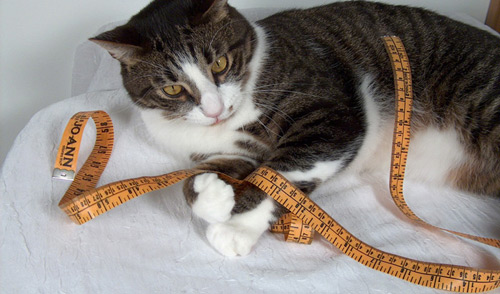Everyone wants to find online performance growth, and often, I see people looking for that "big idea." There is a temptation to swing for the bleachers on every pitch, with a hope that all of the challenges we face can be wiped away with a single home run.
If you work for a magazine brand, you might be considering launching a social network, creating a forum, or starting a job board for your industry. These are all great ideas, but pose a huge challenge in terms of user adoption. I love big ideas, but am always mindful of this:
An idea that requires massive customer behavior change
is one of the most dangerous things you can be spending your time on.
To clarify: the danger is not in the idea, and the danger is not the fault of your customers. The danger often lies in pursuing huge ideas that require a lot of capital, time, institutional buy-in, and resources without first testing and measuring.
So I want to explore ways that you can pursue that big idea, minimizing risk, and increasing the likelihood of success.
The Problem with Executing on Big Goals

In today’s marketplace, businesses need big goals. They are required to survive, let alone for sizeable growth. But there is a problem in how to approach these goals.
For example, let’s say you are an editor working for a magazine who has a stated goal of 20% online page view growth for this year. So, if you had 1,000,000 page views in 2008, the goal is 1,200,000 page views in 2009. Here are a few challenges that someone in this position may face:
- A lot of great ideas, but no clear process to identify which is the best to start with – which will truly increase performance.
- A huge amount of buy-in and focused energy when launching an idea, but dwindling resources as they move to the more arduous steps of overcoming hurdles and making incremental improvements. And all the while, staffers need to continue doing the 100 other things they normally do.
- Paralysis when it comes to understanding how one person, in one small role within a brand, can contribute to a huge goal like that. If they are a reporter, perhaps they have one very specific beat, and are already pumping out 20 articles, 3 blog entries, a video and a newsletter each week. Perhaps they are already coming into the office early, leaving late, and working weekends to get this work done. So how do they say: "I am going to show 20% online performance growth this year?" – How does one person feel empowered to have such a massive affect on things?
- Oftentimes, you will see someone execute well on an idea, but fail to maximize it’s potential because the success was not adequately communicated, replicated and scaled.
So here are two concepts I want to discuss that can help turn broad strategies into simple, actionable tasks: ROI and segmentation.
There are so many things that you need to be doing to help your brand grow online, but likely, you have already pushed your slim resources to the max. Without measuring the return on investment of what you are currently doing, you have no way to determine which tasks you should drop, and which should get more attention. You have to make hard choices to determine which products and processes actually serve the needs of your readers and customers, and which are simply "nice to have," but don’t serve a critical need. These are the things that deplete your available resources.
When talking about big strategies – it is critical to think about how individual members of your team can make a meaningful contribution towards this goal. If the goal is to increase page views by 20% this year, it is not always an option to ask editors to simply write 20% more articles and hope that does the trick.
There is no shortage of great ideas. I rarely walk into a meeting where the other person or group isn’t full of ideas that they are passionate about. The trick here is determining which efforts to move forward with, and put enough resources behind that you can properly execute on the idea.
Staff resources and budgets are not your only limit. You likely have families at home or hobbies you are dying to get to. And you deserve to go home at a reasonable hour, without worrying that you have left a job half done.
Another potential limit is burnout. If someone has passionate ideas on how to change things, but these ideas are not properly measured and vetted, then eventually, this passion wears thin. They can only try to push that rock up the hill for so long, before they back down and let it roll over them.
Focusing your time and energy on a few meaningful things is the first place to start.
To do this, analyze every piece of data you can get your hands on: web analytics, internal surveys, industry research, and any other resources you can find. You don’t need to be a statistician or spend weeks on this process – even a little bit of data can give you insight in mere seconds.
Perhaps you are launching a blog, or trying out a new linking strategy, or looking to improve your event coverage, or rolling out a video series, or using more photos. It goes without saying that you are doing this on top of 100 other things you normally do.
I love big crazy ideas, but once you focus things down to a single initiative you want to try: start small.
When you break a larger goal into smaller segments, you can put things in the field quickly, and measure performance almost immediately. This gives you the opportunity to make small improvements in a matter of days.
Sure, you can spend 6 months building a huge video portal. But… if you have never worked with video on your website before, and if your audience hasn’t been crying for this service, there is a chance you could be wasting valuable time and resources. Data and research might indicate that this is portal has huge potential, but why not do some experiments with customers before you bet the farm on the idea.
Instead of jumping into a 6 month development process, you could use a small fraction of that time to launch a few key videos, along with marketing strategies around them. Perhaps they are tied to a lunch & learn event – or a big feature story – or they are the lead in your weekly newsletter. Either way, if you execute and measure on a few test cases, you will quickly be armed with critical insight that you need to determine the value of a larger strategy. Perhaps you will make big discoveries about what your audience wants, or that they simply don’t want it at all.
Don’t be afraid of duct tape solutions. In other words: Fake it till you make it.
Sometimes, you can only implement and measure one small facet of an idea. For instance: if you have a big idea to launch a series of online forums to get readers talking to each other, and are frustrated that you can’t get the technical resources to build it – then you should try something smaller, but related. Perhaps you launch a blog that is geared towards reader response. If you do this, and after 3 months, you only get 12 comments, then you know that the forum idea might not be the right direction for your audience.
Likewise, if you launch this test blog, and are overwhelmed with comments and participation, then you have a proven model to illustrate the performance increase that a full-blown forum could give you. This is a powerful thing to share when asking for resources and outlining a new direction for your brand online.
Throw things at the wall – this should be done, and should be done with abandon – but ONLY if you are measuring before and measuring after. If you don’t have time to measure, then you have to seriously reassess your workflow. What you want to avoid is throwing 10 ideas at the wall in April, then in May, throwing 10 different ideas at the wall. If you aren’t spending time to see which 1 or 2 ideas from April had a measurable affect, then you should stop messing up the wall.
Consider creating a process for regular reports on key metrics from your website. Pretty soon, you will have a set of internal benchmarks that you can use to determine which new efforts are working, and which aren’t. This also helps establish a critical aspect of your web strategy: goals.
If you find a small success, and you can repeat it, you have struck gold. Two things happen here: one, you can now take this small thing that worked, and begin applying it to other corners of your job and your brand. You can also help sister brands leverage this technique.
Two: As you repeat this idea, you can make small improvements with each iteration, boosting performance. Likely, you will also find a better process to do things more efficiently. What was once a crazy idea done in a fit of passion, quickly becomes a powerful business process.
There are degrees to success, and this is no different in the online world. I have spoken with people who have written off huge chunks of web strategy because they tried it once, and it didn’t work. Likewise, I have seen folks who have found a modicum of success, but failed to fully capitalize on the opportunity: making improvements and challenging the process. They plateau early, the result of which, is a continued fight to find new avenues for growth.
Despite your best efforts, it might take time to hit upon the best process, or evolve the quality or marketing tactics to a place where the audience responds. Take it a step at a time, and use each failure as a lesson for the next time out.
It is easy to wipe away an idea by saying "we tried that," as if there is only a single way to execute on a strategy. Don’t be afraid to tweak a failing process or bring in a fresh perspective. Small changes can turn a failure into a success.
Don’t be afraid to fail. When I see ideas thrown at the wall, and not measured or taken to the next iterative step of improvement, I see an opportunity lost.
We are all blind to what the future holds, and that’s okay, as long as we are not just trying new ideas, but following through with them, whether they succeed or fail. Because in this, we find lessons that inform the next great idea. A book about the design firm IDEO describes their early credo:
"You could stumble, as long as you fell forward." (p 20)
This week’s New York Times Science section had a fun article about how to take a big puzzle, and bring it down to a manageable size. The conclusion was this: by making a few assumptions and some calculated guesswork, you might not get the exact right answer, but you could come within an order of magnitude of it very easily.
In the same regard – by starting small and following through, measuring and sharing the results – you can turn a big idea into a quick case study that might not be perfect, but will likely get your closer to the goal than many of your competitors.
Greater Impact with Focused Resources

I don’t want to be another person, asking you to do another thing. You’ll end up like that poor mule in the first photo up top. Which is why each of us need to be making very critical decisions about what it is we focus our attention on. For the things you do focus on: ensure that they meet critical needs of your audience (and perhaps of advertisers too.)
I watch my coworkers do outstanding work – staying late, coming in on weekends, and doing the work of several people. I can only stand back and admire their passion, their commitment, and a level of expertise that fuels their brands.
As advertising dollars continue to shift, audience behavior evolves, and business partners struggle to find firm footing in a brutal economy – success will be even more difficult to come by. The question is: are you serving the needs your customers had yesterday, or the needs they have today and will have tomorrow.







its gooooooooood…